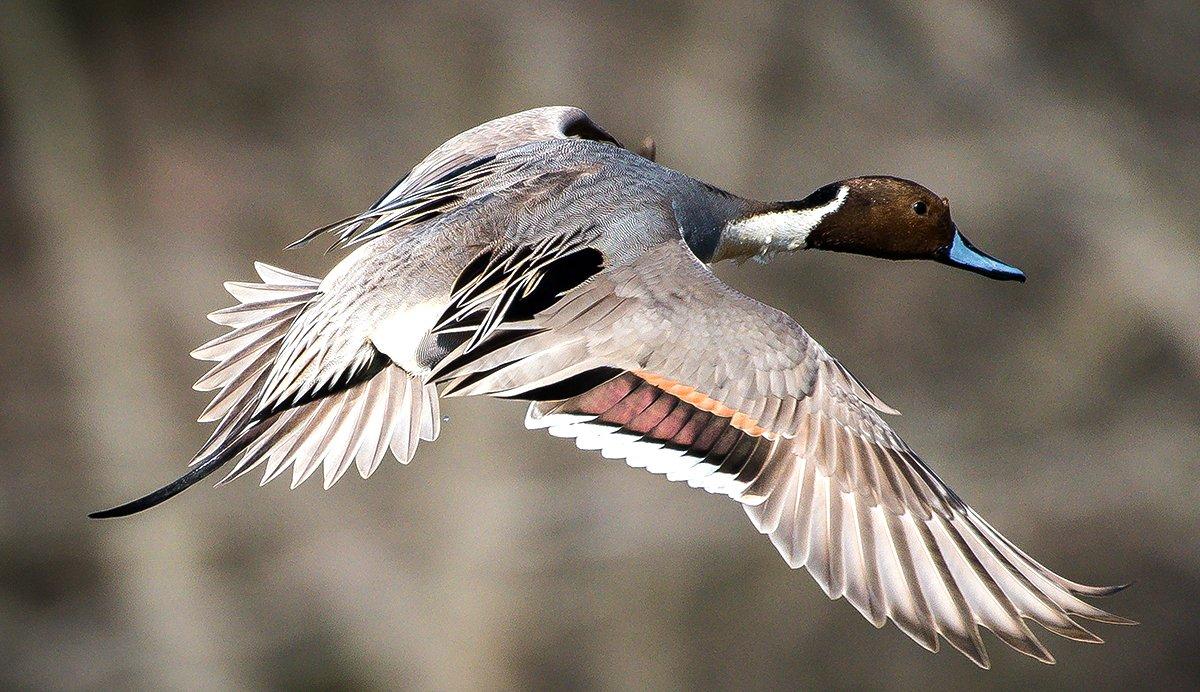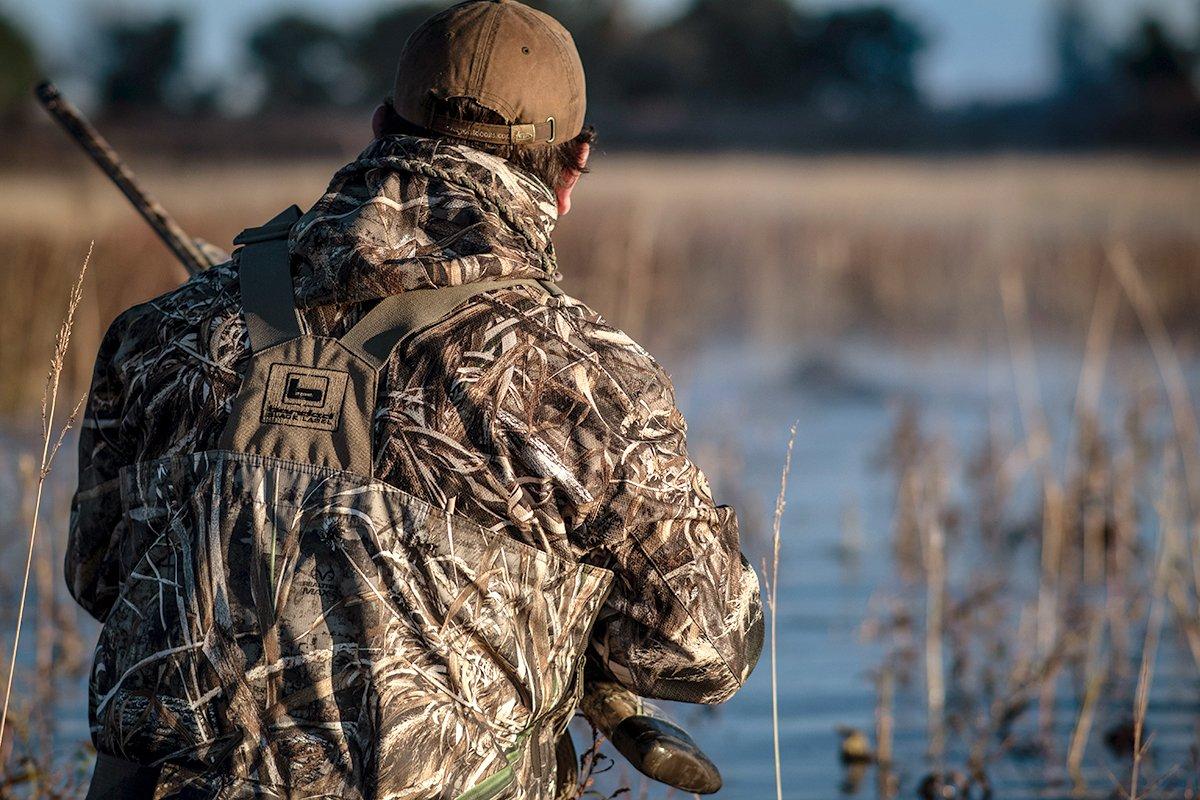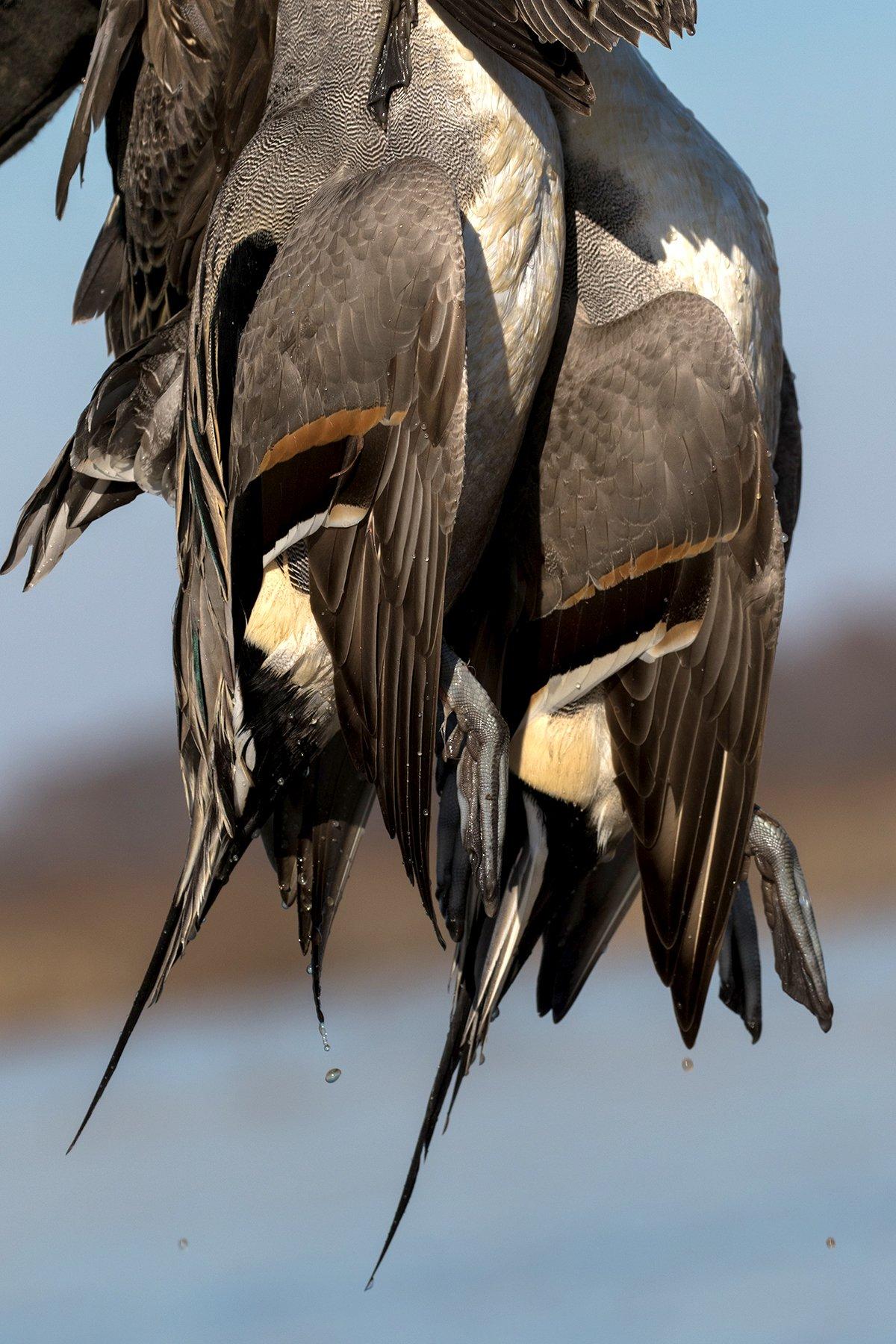You can finish these often-frustrating ducks via calling — really. Learn these subtle sounds to shoot more sprigs
Among waterfowlers, pintails carry a polarizing reputation. On one side, successful pintail hunters consider the birds to be one of the most prized waterfowl. Admired for their unquestioned regality and good looks, pintails are also considered by many to be the greatest wild game table fare. Despite their tasty reputation, around our parts, I would argue that more pintails end up at the taxidermist than over charcoal.
On the other side of the argument, sprigs often toy with the hearts and minds of hunters. I have a friend who calls them the snobs of the sky. I have witnessed him refuse to call to low passing flocks — ducks that might have worked. He hates pintails and makes no bones about it. When wind, sun, decoy setups, calling, camo on the blind or hidden hunters reveal even the slightest flaw, a flight of circling longtails is almost impossible to finish. There are too many eyes, and it only takes one to sound the alarm. But here's the annoying part: Instead of simply flying away when things don't look or sound perfect, a flock will circle endlessly, fully investing the emotions of hunters on the ground, before inevitably flying off and again breaking the hearts and willpower of the hopeful. Pintails can be the ultimate carrot-on-the-stick you never catch. If pintails consistently land in your decoys — by free will or your No. 4s — consider yourself an expert.
Both sides of the debate hold some truth. With pintail hunting, you should place more emphasis on hunting location and decoy setup than calling. In most cases, larger concentrations of pintails are found in big, shallow water, such as marshes or collections of rice fields. Further, if you want to put more pintails on your strap this year, add some pintail decoys to your spread. They're much more receptive to a decoy spread that flashes white from bull decoys than spreads with all black. After you nail down your location and decoys, perfect your calling style. To lure ducks from orbit and into shooting range, your calling style is the best tool for the job. Here are five tips for calling pintails.
(Don't Miss: Become a Better Public-Land Duck Hunter)
Use a Pintail Whistle
If you Google, How to call a pintail, hundreds of results will return of hunters using a pintail whistle. Most commercial pintail calls can also be used for other whistling ducks, such as wigeon and teal. However, the techniques for each are different. Most typical pintail calls look like a miniature plastic megaphone with a large opening at the end of the call and another opening on top, like the opening atop a referee's whistle. Unlike a referee's whistle, there is generally no ball inside the call.
To make the pintail sound, cover the large exit hole in the end of the mini-megaphone, and only blow air through the hole on top of the call. Simultaneously blow and flutter your tongue to make a quick, vibrating tweet, tweet. Each note should last about as long as it took you to read those sound description at normal speed — about a half-second for each tweet.
Many people struggle to flutter their tongue. If that's the case, a referee's whistle will suffice. But be careful. Although a referee's whistle has a ball inside that will make the fluttering sound, more air is required to vibrate the ball and mimic the fluttering sound. There is a delicate line between blowing hard enough to vibrate the ball and blowing so hard that ducks flare from a potential pass interference. As silly as it sounds, if you choose to use a referee-style whistle, you should practice with it just as much as with a true pintail call.
Modify A Mallard Call
The whistle is the iconic pintail sound, but sprigs actually have a much larger vocabulary. Bulls (males) whistle. Females don't whistle but instead quack with a similar sound as a mallard hen. The pintail quack is deeper and raspier than the mallard equivalent. Mallard hens slightly change the pitch of their quack mid-note, but pintail hens are more monotone than their mallard cousins. Their quack is much softer and duller than the sharp, snappy mallard quack.
A basic pintail quack is something most mallard callers should easily pick up, but the nuances are important. In many cases, hunters like to call mallards right into the decoys, especially in places with a lot of ducks or other hunters. That strategy is unlikely to work with the more call-shy pintail. Instead, use the low, mellow quacks in three- to five-note comeback sequences and only when ducks are going away. When they turn back, set the call down. A narrow-barreled double-reed call will work best to make a deep, quiet, raspy quack.
(Don't Miss: 5 Duck Hunting Myths That Must Die)
Change Up a Feeding Chuckle
For mallard callers, mastering the feeding chuckle is important for calling ducks and showing off to their hunting buddies. In many cases, a fast-feeding chuckle is used for showing off a skillset as much as it is for calling ducks. Ducks obviously make the sound, but it can sound different in the air and on the water.
In many cases, ducks in the air exhibit more of a machine-gun style chatter. Ducks on the water that are actively feeding on grain or seeds will make a similar sound, but it's often more broken up and irregular.
Pintails also make a sound when feeding. It sounds similar to the mallard version, but similarly with the quack, the pintail version of a feeding chuckle is much softer and deeper, and more flat sounding. To make the sound, mix up short, choppy chuckle sequences with brief machine-gun sequences. In both cases, the call sequence should not last longer than a half-second to a second. The choppy version should sound like, duh-duh-ddduh-duh, and the machine-gun sound is more like, drrrrr-drrr-drrrrrr, and almost imitates the sound of a longer pintail drake whistle but blown through a mallard call.
Mix In Other Species
Flying pintails are relatively easy to identify. Their long, slender bodies and swept wings look like Cold War fighter jets. In most cases, when hunters see a flight of pintails, they fail to look at every duck in the flight and only focus on the longest tail of the bunch.
In reality, pintails commonly fly with ducks of other species. Wigeon in particular are a pintail's best friend. In some cases, the same wigeon and pintails have migrated together from early fall to late spring down the flyway. Mallards and pintails also share flocks, and mixing in soft wigeon and mallard drake calls can serve as confidence calls for a flight of wary pintails.
Another positive to these sounds is that they can be made using a pintail whistle or referee's whistle. Unlike pintails, wigeon do not flutter their notes but instead make a three-note whistle with emphasis on the middle note: he-HEE-he. In contrast to a pintail whistle, callers making a wigeon sound should remove their finger from the end of the call and let the air pass completely through the big opening. A mallard drake call is also made with the end of the call open but is made by rattling the word dwerrrrt through the call, with the r sound being deep and from the throat instead of whistled.
Call to Finish Birds
Pounding away on a mallard call is unlikely to finish pintails. Real ducks on the water do not sound like a hunter constantly blasting a hard five-note comeback call. In contrast, all the sounds mentioned here are soft and unlikely to spook ducks. The goal is not to grab a duck's attention but instead to subtly coerce ducks into your landing hole.
Soft calling is the secret to finishing pintails. Just as a loud caller doesn't truly sound like a mallard hen on the water, a silent spread isn't natural either. Hunters should team up to make differing and varying types of subtle confidence calls. A decoy spread will never look as good to circling ducks as the real thing. One way to improve the presentation is to sound like comfortable, content ducks on the water.
Next time, when a flock of pintails circles overhead, try fluttering a pintail whistle. Give another hunter a whistle to flutter or make wigeon sounds. If many of your decoys are mallard decoys, another hunter or two should make mallard drake sounds. Take advantage of every hunter's ability to call. All of those in tandem will give circling ducks an ambience of contentment and let more people be involved in the calling process. Odds are, more pintails will splash on the water instead of leaving another group of hunters in disbelief.
(Don't Miss: The Best States to Hunt Mallards, Canvasbacks, Pintails, Black Ducks and Bluebills)










